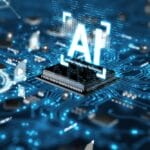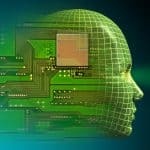Neurotechnology is rapidly transforming approaches to mental health, moving far beyond clinics and laboratories. According to Future Market Insights, the neurotech devices market is projected to grow from $17.8 billion in 2025 to $65 billion by 2035, at a compound annual growth rate (CAGR) of 13.8%. Today, such technologies are already being used in schools, corporate wellness programs, and even in the training of service animals. A key trend is the integration of AI into wearable devices capable of analyzing emotional states in real time and offering self-regulation strategies.
One vivid example of this trend is Neurofeedback 2.0 — a next-generation platform that combines high-precision neuro-recording with adaptive AI models. At the forefront of its development at BrainBit is Anastasia Sysoeva, Product and Strategy Lead and recognized expert in applied neurotechnology and data-driven diagnostic systems.
We spoke with Anastasia to discuss how non-medical neurotechnologies are transforming education, corporate wellness, and the digital mental health market. In the conversation, she shared insights on technological breakthroughs, tangible business results, and what the industry will need to scale such solutions.
Neurotechnology is increasingly moving beyond clinical environments — into education, wellness, and behavioral health. What was the turning point that enabled this expansion into non-medical use cases?
Anastasia Sysoeva: Just a few years ago, working with brain signals was only possible in a lab or clinical setting. But several shifts happened in a short period of time. Affordable EEG headsets with dry electrodes became available, allowing their use without a complex setup or medical staff. Artificial intelligence learned to interpret indicators of stress, focus, and emotional state in real time — and to present them in a clear, practical way. At the same time, the post-pandemic focus on mental health created strong demand for self-regulation tools. All of this opened the door for neurofeedback in schools, corporate wellness programs, and even sports. Today, for example, some schools are already using these systems to help students with ADHD maintain focus — just one sign that “brain tech” is becoming part of everyday life.
You’ve explored various markets. How would you assess the current adoption level of neuroadaptive technologies — and what are the biggest barriers to broader uptake?
Anastasia Sysoeva: The adoption of neuroadaptive technologies is steadily growing but remains uneven. In education and corporate wellness, they have already reached the early-majority stage, used for stress management and focus training. In elite sports and PTSD therapy, adoption is still driven by innovators.
Key barriers include the perceived complexity of “brain tech,” unclear regulatory frameworks in the wellness segment, and concerns over neural data privacy. Scaling will require a simple user experience, clear rules, and stronger trust.
What was the core user problem you aimed to solve with the launch of Neurofeedback 2.0? Why were previous versions not sufficient to address it?
Anastasia Sysoeva: The launch of Neurofeedback 2.0 was aimed at solving a key challenge — the absence of emotionally clear and actionable insights from brain data. Earlier versions were limited to raw EEG metrics without meaningful emotional interpretation or real-time support, and they couldn’t assess hormone or neurotransmitter-related states such as cortisol or serotonin, which are critical for understanding emotional well-being.
Neurofeedback 2.0, powered by Flex 8 and the Callibri devices, addresses this gap through a multi-modal AI system that combines EEG, heart rate variability, and behavioral data. This approach enables outputs such as an Anxiety Score and delivers in-the-moment recommendations — for example, breathing exercises during peak stress. It transforms the device into a personal tool for emotional and cognitive optimization.
What role does artificial intelligence play in the current version of the product? What capabilities did it unlock that weren’t possible before?
Anastasia Sysoeva: Artificial intelligence has shifted the product from simply recording brain data to delivering real-time, personalized guidance. It interprets brain and heart signals into clear emotional indicators and immediately suggests corrective actions.
One standout innovation is the Emotional Hormone Mirror — an AI model that estimates cortisol and serotonin shifts by analyzing EEG asymmetry, particularly between Fp1 and Fp2, alongside heart rate variability. This gives users a window into their emotional state that wasn’t accessible before.
AI also adapts training protocols on the fly, switching modes — for instance, from SMR to theta training — if progress stalls. With these capabilities, Neurofeedback 2.0 acts less like a platform and more like an adaptive coach for emotional regulation and cognitive performance.
One of the key innovations in Neurofeedback 2.0 is the Emotional Hormone Mirror — an AI model that visualizes emotional states in real time. How does it work, and what value does it bring in learning or stress regulation?
Anastasia Sysoeva: The Emotional Hormone Mirror blends two data streams — frontal EEG asymmetry and pulse oximetry — to read a user’s emotional and physiological state. A graph neural network, trained on over 100,000 EEG datasets, powers the Emotion Wheel: a live visual map that links patterns like elevated cortisol to agitation or mental fatigue.
In schools, it can alert teachers when students are hitting overload, allowing them to adjust in real time. In workplaces, it flags early signs of burnout, prompting timely interventions. By turning complex brain and body signals into clear, actionable insights, it helps people manage stress and stay effective under pressure.
Which technological shifts made it possible to deliver this kind of real-time insight — and how did Neurofeedback 2.0 change the game?
Anastasia Sysoeva: The leap wasn’t just about better algorithms — it was about giving those algorithms the speed and precision they need to work in real time. Neurofeedback 2.0 introduced a hardware-software synergy that cut delays to the point where feedback feels instant, and made it possible to process sensitive data securely on the device itself. This means emotional signals can be captured, interpreted, and turned into personalized recommendations within moments. For the user, it’s the difference between reading about stress after it’s passed — and getting guidance right when it matters most.
Since launching Neurofeedback 2.0 with integrated AI, what changes have you seen — and who’s using the technology today? Where’s the next growth wave coming from?
Anastasia Sysoeva: The impact has been clear. User retention is up 65%, thanks to AI personalization that keeps every session relevant. Users with ADHD are improving focus twice as fast as before, and corporate pilots show a 40% drop in EEG patterns linked to high cortisol — meaning stress levels are truly decreasing.
Right now, the technology is in schools supporting special education, in corporate teams fine-tuning focus and stress resilience, and in specialized programs for high-pressure professions. Looking forward, I see neurofeedback becoming a feature of everyday wearables — and, surprisingly, even helping service animals manage anxiety. The scope is widening faster than we expected.
The Editorial Team at Healthcare Business Today is made up of experienced healthcare writers and editors, led by managing editor Daniel Casciato, who has over 25 years of experience in healthcare journalism. Since 1998, our team has delivered trusted, high-quality health and wellness content across numerous platforms.
Disclaimer: The content on this site is for general informational purposes only and is not intended as medical, legal, or financial advice. No content published here should be construed as a substitute for professional advice, diagnosis, or treatment. Always consult with a qualified healthcare or legal professional regarding your specific needs.
See our full disclaimer for more details.








